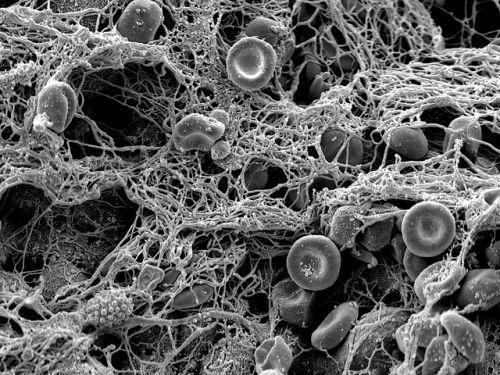What Should I Know About Blood Clots?

Blood flows continuously through blood vessels and supplies nutrients and oxygen to different parts of the body. At the site of an injury, a blood clot prevents excess bleeding. Under normal conditions, blood clots are lifesaving. When the clot is formed as a part of normal repair process in the body, it is rarely of concern. But an abnormal blood clot may lead to a number of life threatening medical conditions like a heart attack and stroke. This often happens when the blood clot is formed when it is not needed or when it happens at the wrong place.
Formation of blood clots are triggered by certain chemicals called thrombogenic substances. When the flowing blood comes across thrombogenic substances, the process of blood clot formation is initiated. Thrombogenic substances are usually located in the skin and in the walls of the blood vessels. When there is a rupture in the blood vessel wall and bleeding, these substances comes in contact with the flowing blood resulting in blood clots.
Cholesterol plaques in the blood vessels of the heart or brain may rupture all on a sudden releasing the thrombogenic substances on the way. This may trigger the formation of blood clots within the blood vessels hindering blood flow to these major organs, which in turn leads to stroke and heart attack.
Abnormal blood clot formation may also happen when the blood flow is not proper as in the case of atrial fibrillation. In this condition, blood may pool within the heart triggering the formation of blood clots. These clots may then move along with the flow of the heart to other organs like brain where it may cause stroke. If the blood flow to the legs are impeded for a longer duration, it may increase the risk of deep venous thrombosis, or clots in the veins of the leg.
Abnormal clots in the veins that most often happen in the legs and arms are characterized by symptoms like swelling, pain, warmth and redness in the region. Clots in arteries may lead to cell death as the cells and tissues are deprived of oxygen and nutrition. Pain is one of the most common symptoms of arterial clots. Other symptoms of the condition may depend on the location of clot, like stroke if the clot is in the arteries leading to the brain and heart attack if the clot is present in blood vessels leading to the heart. If the clot is found in vessels leading to any of the limbs, weakness, loss of sensation and paralysis are common.











